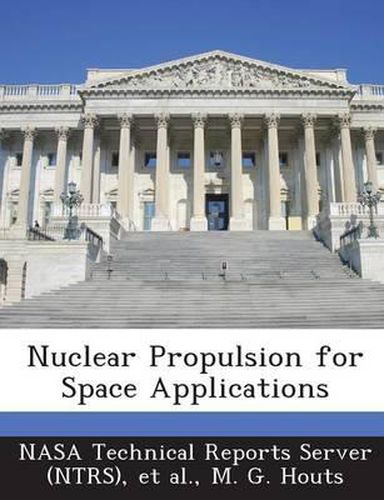Readings Newsletter
Become a Readings Member to make your shopping experience even easier.
Sign in or sign up for free!
You’re not far away from qualifying for FREE standard shipping within Australia
You’ve qualified for FREE standard shipping within Australia
The cart is loading…






Basics of Nuclear Systems: Long history of use on Apollo and space science missions. 44 RTGs and hundreds of RHUs launched by U.S. during past 4 decades. Heat produced from natural alpha (a) particle decay of Plutonium (Pu-238). Used for both thermal management and electricity production. Used terrestrially for over 65 years. Fissioning 1 kg of uranium yields as much energy as burning 2,700,000 kg of coal. One US space reactor (SNAP-10A) flown (1965). Former U.S.S.R. flew 33 space reactors. Heat produced from neutron-induced splitting of a nucleus (e.g. U-235). At steady-state, 1 of the 2 to 3 neutrons released in the reaction causes a subsequent fission in a \“chain reaction\” process. Heat converted to electricity, or used directly to heat a propellant. Fission is highly versatile with many applications.
$9.00 standard shipping within Australia
FREE standard shipping within Australia for orders over $100.00
Express & International shipping calculated at checkout
Basics of Nuclear Systems: Long history of use on Apollo and space science missions. 44 RTGs and hundreds of RHUs launched by U.S. during past 4 decades. Heat produced from natural alpha (a) particle decay of Plutonium (Pu-238). Used for both thermal management and electricity production. Used terrestrially for over 65 years. Fissioning 1 kg of uranium yields as much energy as burning 2,700,000 kg of coal. One US space reactor (SNAP-10A) flown (1965). Former U.S.S.R. flew 33 space reactors. Heat produced from neutron-induced splitting of a nucleus (e.g. U-235). At steady-state, 1 of the 2 to 3 neutrons released in the reaction causes a subsequent fission in a \“chain reaction\” process. Heat converted to electricity, or used directly to heat a propellant. Fission is highly versatile with many applications.